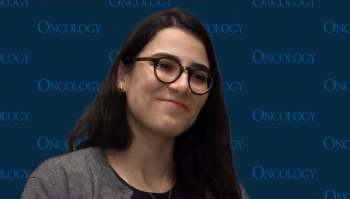
Given resource scarcity, developing practice strategies for resource-constrained settings would require aid from commercial and government stakeholders.

Your AI-Trained Oncology Knowledge Connection!


Given resource scarcity, developing practice strategies for resource-constrained settings would require aid from commercial and government stakeholders.

Approximately 95% of those with a complete response to enfortumab vedotin plus pembrolizumab were alive after 2 years in the phase 3 EV-302 trial.

According to Megan Mullins, PhD, MPH, challenging cultural norms surrounding death and dying may reduce the receipt of low-value end-of-life cancer care.

When pembrolizumab is combined with immunotherapies, the incidence of grade 3 to 5 toxicities increases, especially with anti–CTLA-4 combinations.

Thomas Powles, MBBS, MRCP, MD, highlighted fatigue, nausea, and peripheral neuropathy as toxicities observed with enfortumab vedotin plus pembrolizumab.

“We’ve seen with the initial anti-CTLA-4 ipilimumab experience that, as time went by, we were better at identifying and managing toxicities,” stated Omid Hamad, MD.

This video segment discusses strategies for patient education and preparation for second-line treatment with RAS GTPase inhibitors, as well as therapeutic options to consider if a patient progresses on adagrasib.

This video segment explores the potential role of KRAS-targeted therapies in the frontline treatment of KRAS-positive metastatic NSCLC, highlighting considerations for specific patient populations and disease characteristics.

This video segment examines strategies for managing adverse events associated with adagrasib, comparing its safety profile to other RAS GTPase inhibitors like sotorasib, and discusses key differences, benefits, and risks that may influence treatment selection or consideration of clinical trials.

Earlier and more frequent talks about disabling ICDs with patients receiving end-of-life care and their families may help avoid excessive pain.

This segment examines Dr. Mikhael's approach to comparing ide-cel and cilta-cel for patient selection, emphasizing how patient traits, efficacy, and safety profiles influence treatment decisions across different groups.
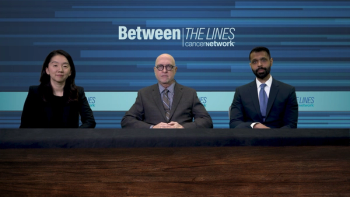
Panelists discuss how the 5-year survival data for nivolumab plus chemotherapy underscore its sustained efficacy as a first-line treatment, showing durable benefits over alternatives. Further research, including real-world evidence and broader clinical trials, is needed to validate its long-term impact across diverse patient populations and cancer subtypes.

Panelists discuss how balancing treatment intensity with quality of life remains a critical challenge in advanced gastric cancers (GCs) and how implementing biomarker-driven approaches such as PD-L1 combined positive score (CPS) testing faces practical hurdles in clinical settings. Key considerations include optimizing patient outcomes while managing adverse effects and addressing barriers such as testing accessibility, result turnaround time, and standardization of biomarker interpretation.

Large international meetings may facilitate conversations regarding disparities of care outside of high-income countries.

A pooled analysis found pembrolizumab has a discontinuation rate of 12.7%, and a major key to handling it is maintaining good communication between the doctor and the patient.

Dr. Kim discusses her experience with lorlatinib in real-world settings for ALK+ NSCLC, highlighting both the benefits and challenges of incorporating it into clinical practice.

Dr. Garon describes the current treatment landscape for metastatic ALK+ NSCLC and explores alternative treatment options that could have been considered for these patients.
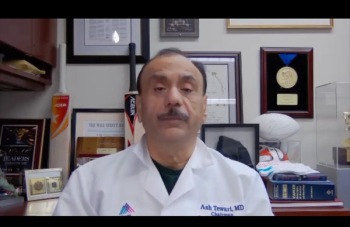
“Even after doing 10,000 of these operations, we are tweaking [the hood technique]…to make things better,” according to Ash Tewari, MD, MBBS, MCh, FRCS.

Updated findings from the phase 3 EV-302 trial show enduring responses and survival improvements with enfortumab vedotin plus pembrolizumab.
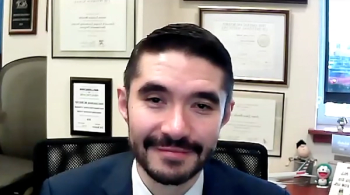
AI-powered tools may help alleviate doctor burnout and give clinicians more time to directly engage with patients.

An individualized vaccine as well as aerosolized medicines are 2 novel forms of treatment that are under development for managing brain tumors.
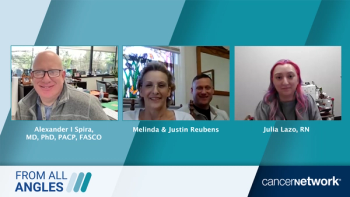
Panelists discuss novel agents and strategies being explored for the future treatment of advanced EGFR-mutant NSCLC, sharing optimism about emerging therapies that could significantly improve patient outcomes.

Panelists discuss key aspects of supportive care from the patient perspective in the EGFR-mutant advanced NSCLC journey, focusing on the strategies and resources that have been most helpful in managing symptoms and improving quality of life throughout treatment.
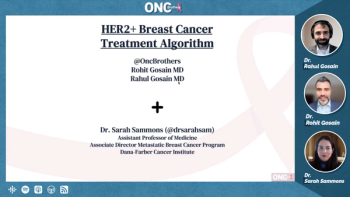
Panelists discuss how, data-free navigation of HER2+ breast cancer treatment requires careful consideration of established guidelines while accounting for individual patient factors. Treatment typically follows a multimodal approach, combining targeted HER2 therapies, chemotherapy, and surgery based on clinical expertise.

Panelists discuss how; the treatment of HER2-positive metastatic breast cancer typically involves HER2-targeted therapies combined with chemotherapy. First-line treatment usually consists of trastuzumab plus pertuzumab with a taxane. Subsequent lines may include T-DM1, tucatinib-based combinations, or other HER2-directed therapies, with treatment selection guided by disease characteristics and prior therapy response.

Panelists discuss how, TDM-1 (Trastuzumab emtansine/Kadcyla) is an antibody-drug conjugate used in HER2-positive breast cancer treatment. This targeted therapy combines Herceptin's cancer-cell targeting ability with a potent chemotherapy drug, delivering treatment directly to cancer cells while minimizing damage to healthy tissue.

Panelists discuss how, locally advanced HER2-positive breast cancer is characterized by overexpression of HER2 proteins with regional spread beyond the primary tumor, involving either extensive lymph node involvement, chest wall, or skin, but without distant metastases. Treatment typically combines targeted HER2 therapy, chemotherapy, and local interventions.

Panelists discuss how, for early-stage HER2-positive breast cancer, standard treatment typically combines surgery with targeted therapy (like trastuzumab/Herceptin), chemotherapy, and often radiation. This multi-modal approach, tailored to individual factors, has significantly improved survival rates for this aggressive subtype.

The hood technique, developed by Ash Tewari, MD, aids in facilitating earlier returns of continence with reduced residual cancer rates.

This video episode compares ide-cel and cilta-cel for patient selection, examining specific characteristics, efficacy and safety profiles, and their influence on treatment decisions across diverse patient groups.